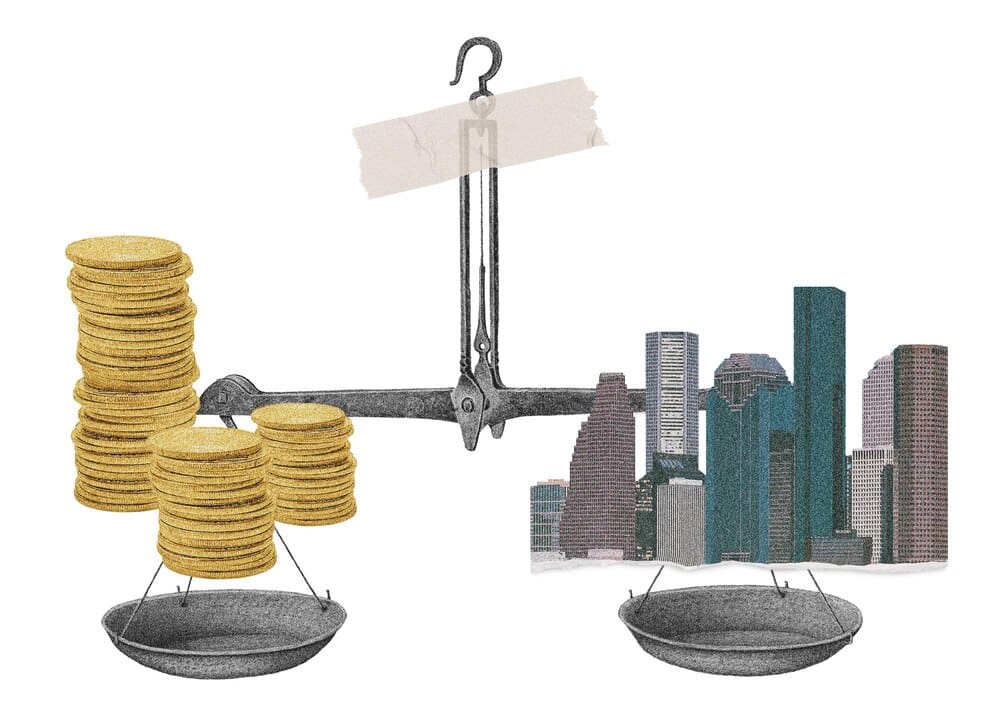A Traditional Individual Retirement Arrangement, or IRA, is a tax-advantaged savings account that allows individuals with earned income to invest for retirement, offering a powerful upfront tax deduction that can lower their current-year tax bill. For millions of Americans, the Traditional IRA serves as a cornerstone of their retirement strategy, providing a vehicle for tax-deferred growth where investments can compound without the annual drag of capital gains or dividend taxes. The central trade-off, and the primary distinction from its popular counterpart, the Roth IRA, lies in its tax treatment: savers get a tax break now in exchange for paying income tax on their withdrawals in retirement. This fundamental choice—pay taxes later with a Traditional IRA or pay them now with a Roth IRA for tax-free future withdrawals—is a critical decision for anyone planning for their financial future, and the right answer depends entirely on an individual’s current and expected future financial situation.
What is a Traditional IRA?
At its core, a Traditional IRA is a personal savings plan that gives you tax advantages for setting aside money for retirement. You can open one at nearly any financial institution, including brokerage firms, banks, and mutual fund companies. Once opened, you contribute money and choose how to invest it from a wide range of options, such as stocks, bonds, mutual funds, and exchange-traded funds (ETFs).
The account’s structure is designed to encourage long-term saving by combining two significant tax benefits: a potential upfront deduction and tax-deferred growth. These features work together to help your retirement nest egg grow more efficiently than it would in a standard taxable brokerage account.
The Power of Tax Deferral
Perhaps the most significant, yet often overlooked, benefit of a Traditional IRA is tax-deferred growth. In a regular investment account, you typically owe taxes each year on any dividends or interest your investments generate, as well as capital gains taxes when you sell an investment for a profit. This annual tax bill acts as a constant drag on your portfolio’s growth.
With a Traditional IRA, that drag is eliminated. Your investments grow unimpeded by annual taxes. A stock can be sold for a profit and the proceeds reinvested without triggering a tax event. Dividends can be reinvested to buy more shares, allowing your money to compound more rapidly over time. Taxes are only due when you begin withdrawing the money, typically in retirement.
The Upfront Tax Deduction
The most well-known feature of the Traditional IRA is the ability for contributors to deduct their contributions from their taxable income. For 2024, if you are eligible, you can contribute up to $7,000 (or $8,000 if you are age 50 or older) and potentially deduct that full amount. This directly lowers your adjusted gross income (AGI), which can result in a lower tax bill for the year.
For example, if you are in the 22% federal tax bracket and make a deductible contribution of $7,000, you could save $1,540 on your taxes for that year ($7,000 x 0.22). However, eligibility for this deduction depends on your income and whether you or your spouse are covered by a retirement plan at work, like a 401(k). If you are not covered by a workplace plan, you can take the full deduction regardless of your income. If you are covered, the ability to deduct your contribution phases out as your income increases.
Contribution and Withdrawal Rules
To contribute to a Traditional IRA, you must have earned income, such as wages, salaries, or self-employment income. The annual contribution limit is set by the IRS and is periodically adjusted for inflation. As mentioned, for 2024, this limit is $7,000, with an additional $1,000 “catch-up” contribution allowed for those age 50 and over.
When it comes to withdrawals, the rules are strict. All money you take out—both your contributions and their earnings—is taxed as ordinary income. Furthermore, if you withdraw funds before reaching age 59½, you will likely face a 10% early withdrawal penalty on top of the income tax, though exceptions exist for certain situations like a first-time home purchase, disability, or significant medical expenses.
Finally, the government requires you to start taking money out of your Traditional IRA once you reach a certain age. These are called Required Minimum Distributions (RMDs), and they currently begin at age 73. This rule ensures the IRS eventually collects the deferred taxes on the money in your account.
The Roth IRA: A Different Approach to Retirement Savings
The Roth IRA, established in 1997, offers an inverted tax structure compared to the Traditional IRA. It has become immensely popular, especially among younger investors and those who anticipate being in a higher tax bracket in the future.
Instead of an upfront tax break, the Roth IRA’s primary benefit comes on the back end. It provides for completely tax-free growth and, most importantly, tax-free qualified withdrawals in retirement.
The Core Difference: Post-Tax Contributions
When you contribute to a Roth IRA, you do so with after-tax dollars. This means you have already paid income tax on the money you are putting into the account. Because of this, you do not receive a tax deduction in the year you contribute.
This is the fundamental trade-off. You forgo a tax break today for a much more powerful one in the future. For many, paying taxes on the “seed” is preferable to paying taxes on the “harvest.”
The Main Attraction: Tax-Free Growth and Withdrawals
Once your money is inside a Roth IRA, it grows completely free of taxes. You will never pay capital gains or dividend taxes on the investments within the account. The real magic happens in retirement. As long as you are at least 59½ and your account has been open for five years, every dollar you withdraw—both your original contributions and all the accumulated earnings—is 100% tax-free.
Imagine you contribute $100,000 to a Roth IRA over your career, and it grows to $750,000 by the time you retire. You can withdraw that entire $750,000 without paying a single cent in federal income tax. This provides tremendous certainty in retirement, as you are shielded from any potential future tax rate hikes.
Roth IRA Contribution and Income Limits
Roth IRAs share the same annual contribution limits as Traditional IRAs ($7,000, or $8,000 if 50 or over, for 2024). This limit is a combined total across all IRA accounts; you cannot contribute the maximum to both a Traditional and a Roth IRA in the same year.
A critical distinction, however, is that the ability to contribute directly to a Roth IRA is limited by income. For 2024, the ability for a single tax filer to contribute begins to phase out at a Modified Adjusted Gross Income (MAGI) of $146,000 and is completely eliminated at $161,000. High-income earners are therefore barred from making direct contributions, though some may use a strategy known as the “Backdoor Roth IRA.”
Traditional vs. Roth IRA: Which Is Right for You?
Choosing between a Traditional and a Roth IRA boils down to a single, albeit complex, question: Do you think your income tax rate will be higher or lower in retirement than it is today?
Your Tax Rate Now vs. Later
If you expect to be in a lower tax bracket in retirement, the Traditional IRA is often the better choice. Taking the tax deduction today, when you are in a higher tax bracket, is more valuable. You save more on taxes now and pay taxes later when your rate is lower.
Conversely, if you expect to be in a higher tax bracket in retirement, the Roth IRA is generally superior. It is more advantageous to pay taxes on your contributions now, at your current lower rate, and enjoy tax-free withdrawals later when your income and tax rate are higher.
For many young people early in their careers, the Roth IRA is a logical fit. Their income is likely the lowest it will ever be, making it a great time to pay the taxes upfront. For those in their peak earning years, the immediate tax deduction from a Traditional IRA can be very appealing.
Comparing Key Features Side-by-Side
The decision becomes clearer when you line up the features. With a Traditional IRA, contributions may be tax-deductible, growth is tax-deferred, and withdrawals in retirement are taxed as ordinary income. You must also take RMDs starting at age 73.
With a Roth IRA, contributions are made with after-tax dollars and are never deductible. However, growth is tax-free, and qualified withdrawals in retirement are also completely tax-free. Roth IRAs have no RMDs for the original account owner and offer the unique flexibility of allowing you to withdraw your own contributions (but not earnings) at any time, for any reason, without tax or penalty.
Beyond the Basics: Advanced Considerations
You are not limited to choosing just one type of account. Many savvy savers contribute to both, a strategy known as tax diversification. By holding both pre-tax funds (in a Traditional IRA or 401(k)) and post-tax funds (in a Roth IRA), you give yourself greater flexibility in retirement to manage your taxable income from year to year.
High earners who are ineligible to contribute to a Roth IRA directly can often utilize the Backdoor Roth IRA strategy. This involves making a non-deductible contribution to a Traditional IRA and then converting that account to a Roth IRA. It is a perfectly legal maneuver, but it can be complicated by the “pro-rata rule” if you have existing funds in other Traditional IRAs.
Making the Right Choice for Your Future
Ultimately, both the Traditional and Roth IRA are exceptional tools for building long-term wealth and securing a comfortable retirement. The decision between them hinges on your personal financial circumstances and your educated guess about the future of your income and tax rates. A Traditional IRA offers immediate gratification through a tax deduction, while a Roth IRA provides long-term peace of mind with tax-free withdrawals.
The most critical step is not getting paralyzed by the choice, but rather to begin saving consistently. You can always re-evaluate your strategy as your life and career evolve. By understanding the fundamental differences between these two powerful accounts, you can make an informed decision that aligns with your financial goals and sets you on the path to a secure future.







